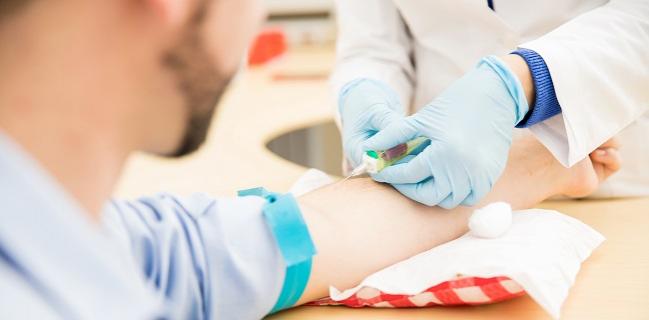Single Troponin Test May Be Enough for Safe Discharge of Chest Pain Patients
Combined with the HEART score, a single negative test can identify patients with a low risk of short-term events.

Assisted by the HEART score, emergency physicians appear to be able to safely discharge patients with chest pain after just one negative conventional troponin test result, a retrospective cohort study suggests.
The 30-day rate of acute MI or cardiac mortality was similar regardless of whether patients had one troponin test or underwent serial testing in the emergency department (0.4% in both groups), researchers report.
Clinical guidelines recommend serial troponin testing in patients presenting with symptoms indicative of ACS, but these findings suggest that a single negative test—when combined with risk-stratification tools like the HEART score and a physician’s clinical judgment—might be good enough, senior author Adam Sharp, MD (Kaiser Permanente Southern California, Pasadena, CA), told TCTMD.
“It’s certainly something to be considered, especially as people move to a high-sensitivity troponin,” said Sharp, who acknowledged that the observational study is not definitive. “We need to be thoughtful about not requiring that everybody receive two troponin tests, because I think if you were to speak to any practicing emergency physician, there’s just a lot of variability in the histories and the patients that come in to see us.”
There are no details on why physicians chose to obtain one or multiple troponin tests in the current study, Sharp added. “Nonetheless, under their discretion they did use one troponin, and safely.”
The study, with lead author Maereg Wassie, MD (Kaiser Permanente Southern California, Los Angeles Medical Center, CA), was published online February 23, 2021, in JAMA Network Open.
Most Patients Get One Troponin Test
Despite guidelines supporting serial troponin testing for the evaluation of suspected ACS in the emergency department, several recent studies involving high-sensitivity troponin assays have provided evidence that suggests a single measurement can safely rule out ACS if the initial result is low—that includes a large US study and a meta-analysis of data from 10 countries.
Use of high-sensitivity troponin assays remains low in the United States, however, and some emergency physicians have started discharging low-risk patients after a single conventional troponin test result.
To explore the safety of this approach, the investigators evaluated data on patients presenting with chest pain to 15 community emergency departments within the integrated healthcare system of Kaiser Permanente Southern California between May 5, 2016, and December 1, 2017. The analysis included 27,918 patients (mean age 58.7 years; 58.1% women) who were evaluated with the HEART (history, electrocardiogram, age, risk factors, and troponin) score and underwent conventional troponin testing with the Access AccuTnI+3 assay (Beckman Coulter).
More than half of patients (51.8%) were discharged after a single test showed a troponin level below the limit of quantitation (< 0.02 ng/mL), whereas 38.0% had two tests done and 10.2% had three or more done. Those who had only one measurement taken tended to be lower risk: they were younger and less likely to have various comorbidities, including hypertension, diabetes, lipid disorders, kidney failure, and congestive heart failure. Patients with lower HEART scores, indicative of lower risks of ACS or MACE, were more likely to be discharged after one troponin test.
The study’s primary outcome was a composite of acute MI or cardiac mortality through 30-day follow-up, and after adjustment for cardiac risk factors and comorbidities, there was no difference based on the how many troponin tests were done (adjusted OR 1.41; 95% CI 0.96-2.07).
Looking at secondary outcomes, patients who were discharged after a single troponin test were less likely to undergo CABG (adjusted OR 0.24; 95% CI 0.11-0.48) or invasive coronary angiography (adjusted OR 0.46; 95% CI 0.38-0.56), differences Sharp attributed to the lower risk of the single-test group.
“This study suggests that physician discretion to order serial or single troponin tests in managing emergency department patients suspected to have acute coronary syndrome appears safe and is a reasonable strategy to possibly improve efficiency without an adverse association with patient outcomes,” the investigators write in their paper. They note that “this strategy can prove useful in situations of high healthcare demand owing to increasing costs, emergency department crowding, or a limited resource setting, such as the [COVID-19] pandemic.”
Reflective of US Practice?
Sharp said that the high proportion of patients who received just one troponin test before discharge is likely consistent with what’s happening across the United States.
“When I see a patient that walks in and they’ve had chest pain for 12 hours, why keep them in the ER for another 3 hours to see if [the troponin’s] different after 3 hours? It just doesn’t really make any sense,” he said. He added, however, that if patients’ chest pain is severe or worsening, serial testing might be warranted.
Commenting for TCTMD, Barbra Backus, MD, PhD (Erasmus Medical Center, Rotterdam, the Netherlands), one of the authors of an accompanying editorial, said the study is noteworthy in that it shows that many emergency physicians in the United States are not routinely ordering multiple troponin tests for patients with suspected ACS.
And it “shows that when you do proper risk stratification with the HEART score, you can safely discharge patients with a single negative conventional troponin,” said Backus, who created the score. That strategy, which is not widespread in Europe, saves time and reduces crowding in the emergency department, she said.
It will likely take a prospective, randomized study showing that a protocol combining use of the HEART score and a single troponin test is at least as safe as performing multiple tests before guideline writers are likely to start recommending the approach, Backus predicted.
While awaiting such a trial, the one by Wassie et al “shows that when emergency physicians use a proper risk stratification [tool] such as the HEART score and have a low risk estimation for that patient with chest pain, if that is combined with a single negative troponin test it is safe to send your patient home,” assuming there are no concerns about other serious conditions like pulmonary embolism, she said.
Todd Neale is the Associate News Editor for TCTMD and a Senior Medical Journalist. He got his start in journalism at …
Read Full BioSources
Wassie M, Lee M-S, Sun BC, et al. Single vs serial measurements of cardiac troponin level in the evaluation of patients in the emergency department with suspected acute myocardial infarction. JAMA Netw Open. 2021;4:e2037930.
Backus BE, Body R, Weinstock MB, et al. Troponin testing in the emergency department—when 2 become 1. JAMA Netw Open. 2021;4:e210329.
Disclosures
- Sharp reports receiving grants from the National Heart, Lung, and Blood Institute during the conduct of the study.
- Wassie reports no relevant conflicts of interest.
- Backus reports being the founder of the HEART score.





Comments